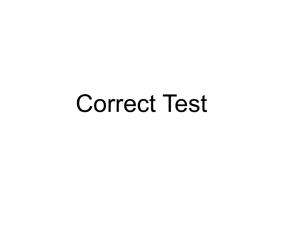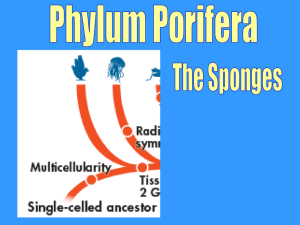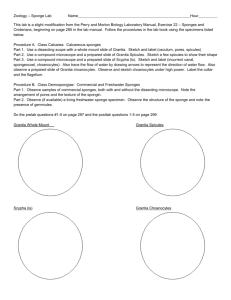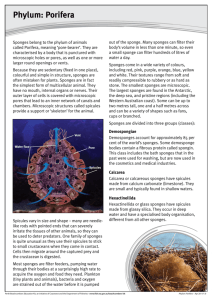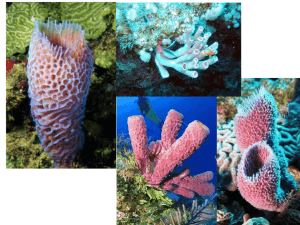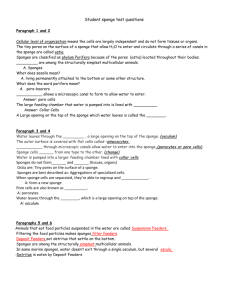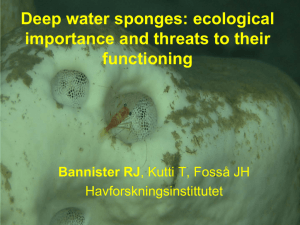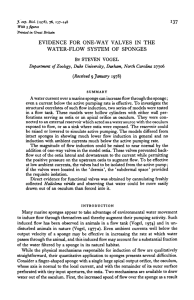PHYLUM PORIFERA: Sponges
advertisement
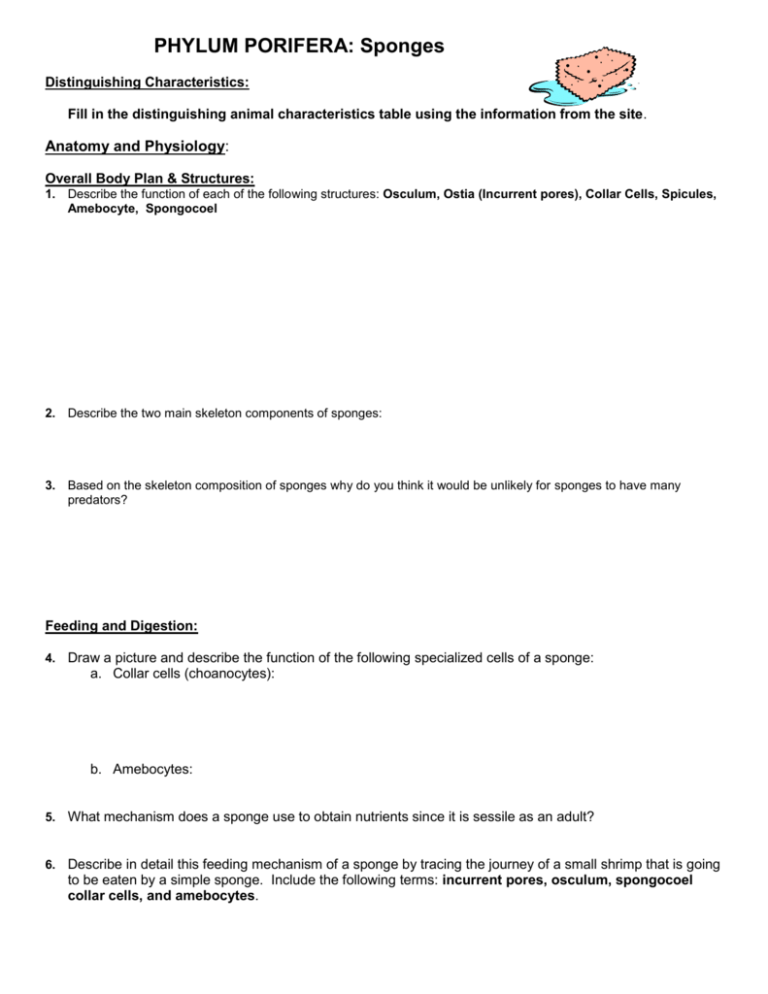
PHYLUM PORIFERA: Sponges Distinguishing Characteristics: Fill in the distinguishing animal characteristics table using the information from the site. Anatomy and Physiology: Overall Body Plan & Structures: 1. Describe the function of each of the following structures: Osculum, Ostia (Incurrent pores), Collar Cells, Spicules, Amebocyte, Spongocoel 2. Describe the two main skeleton components of sponges: 3. Based on the skeleton composition of sponges why do you think it would be unlikely for sponges to have many predators? Feeding and Digestion: 4. Draw a picture and describe the function of the following specialized cells of a sponge: a. Collar cells (choanocytes): b. Amebocytes: 5. What mechanism does a sponge use to obtain nutrients since it is sessile as an adult? 6. Describe in detail this feeding mechanism of a sponge by tracing the journey of a small shrimp that is going to be eaten by a simple sponge. Include the following terms: incurrent pores, osculum, spongocoel collar cells, and amebocytes. Respiration/Circulation: 7. What mechanism does sponges use to exchange gases? 8. Why would a circulatory system not be necessary? Reproduction: Asexual Methods: 9. How do sponges reproduce asexually? 10. Describe how a gemmule allows some freshwater sponges to survive during harsh conditions? How is this related to a fungi or bacteria spore? 11. What method allows sponges to regrow missing parts? Sexual Methods: 12. Describe the path of a sponge sexual reproduction from a sperm through a swimming larva and the creation of a new sponge (Again a diagram is worth a thousand words!) 13. Are sponges hermaphroditic? Do they fertilize themselves? 14. Why is self fertilization basically like asexual reproduction and why would this be detrimental to an organism (Discuss with your group mates) 15. Why do you think being hermaphroditic is a benefit for a sessile organism like a sponge? Classification of Sponges: Go to the links of the three types of porifera and fill out the chart: 16. Sponges are basically classified into classes by the type of skeleton composition. List the three classes of sponges and the type of skeleton of spicules they are made up of: Class Calcarea Hexactinelida Demospongiae Spicules made of: Ecological Relationships: 17. How many species of sponges are there and where do they live? 18. What are the ranges in size of sponges? 19. What are some ecological benefits & harms of sponges? Type of canal system:


